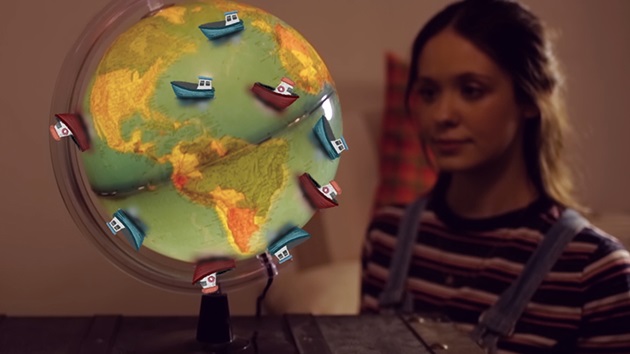Sustainable fishing is possible in the Hauraki Gulf with proper management and conservation measures.
The key is to balance fishing activities with the need to preserve marine ecosystems and marine biodiversity.
There are currently no fisheries operating in the Hauraki Gulf that have achieved the MSC standard for sustainable fishing, but this could be possible with the appropriate management levels.
What is the Hauraki Gulf?
The Hauraki Gulf / Tīkapa Moana is a large coastal embayment located on the northeastern coast of New Zealand's North Island. It encompasses a rich marine environment with diverse habitats, such as rocky reefs, sandy beaches, and estuaries. The Gulf is known for its scenic beauty, recreational opportunities, and significant ecological value.
Why are there concerns about fishing in the Hauraki Gulf?
Concerns about fishing in the Hauraki Gulf stem from overfishing, habitat degradation, and the decline of key species. Overfishing has reduced fish populations, disrupting the marine food web and ecosystem balance (March 2003, Overfishing leads to loss of genetic diversity in Tasman Bay, [PDF 65 KB])
What does sustainable fishing look like?
Sustainable fishing practices ensure there are enough mature adults of reproductive age to keep stock numbers high.
The MSC Fisheries Standard can be used to determine sustainable fishing regardless of a fishery's scale, geography, or fishing method.
When fisheries are independently assessed to the MSC Fisheries Standard, three main principles are considered:
- Sustainable fish stocks
- Minimising environmental impacts
- Effective fisheries management
Fisheries that achieve certification are audited every year and may be required to make further improvements to their practices to protect marine resources for future generations.
What is currently being done to protect marine life in the Hauraki Gulf?
Several measures are in place to protect marine life in the Hauraki Gulf, including:
- Marine reserves: Marine Protected Areas where fishing and other extractive activities are restricted or prohibited to allow ecosystems to recover and thrive.
- Regulatory measures: Fishing quotas, seasonal closures, and size limits to control fish harvests and protect breeding populations.
- Restoration projects: Initiatives to restore habitats such as seagrass beds, shellfish reefs, and coastal wetlands.
What is happening to regenerate the Hauraki Gulf?
Efforts to regenerate the Hauraki Gulf include:
- Habitat restoration: Projects to restore vital habitats such as kelp forests, seagrass meadows, and shellfish beds.
- Species recovery programs: Initiatives to rebuild populations of threatened species through breeding programs and habitat enhancement.
- Pollution control: Measures to reduce land-based pollution entering the Gulf, such as improving wastewater treatment, managing land-derived sediment and reducing agricultural runoff.
Revitalising the Gulf, the Government's action plan for the Hauraki Gulf
The Revitalising the Gulf initiative by the New Zealand Government aims to restore the health of the Hauraki Gulf. Key actions include:
- The introduction of a new Hauraki Gulf / Tīkapa Moana Marine Protection Bill
- Creating 19 new marine protection areas (11 new High Protection Areas, 5 Seafloor Protection Areas, and establishing 2 additional marine protection areas adjacent to existing no-take marine reserves)
- Developing an area-based fisheries plan
- Restoring habitats
- Doing broad-scale habitat and biodiversity surveys to learn more about what the Gulf holds,
- Understanding best where to direct conservation and protection activities as part of ecosystem-based spatial management
- Supporting sustainable aquaculture
- Enhancing marine biosecurity
- Managing protected species
- Involving local communities in coastal management.
The strategy involves collaborative efforts from various stakeholders and follows the Sea Change – Tai Timu Tai Pari Hauraki Gulf Marine Spatial Plan to achieve these goals.
What can I do to promote sustainable fishing in the Hauraki Gulf?
To fish sustainably in the Hauraki Gulf, consider the following practices:
- Adhere to regulations: Follow all fishing regulations, including size limits, quotas, and seasonal closures.
- Use sustainable gear: Opt for fishing gear that minimises bycatch and habitat damage.
- Catch and release: Practice catch and release for non-target species or when fish populations are low.
- Support sustainable seafood: Choose sustainable seafood with the MSC blue fish tick label from a well-managed and sustainable fishery.
Are all fish species overfished in the Hauraki Gulf?
Not all fish species in the Hauraki Gulf are overfished. Using fish stock assessments from Fisheries New Zealand, the following key stocks relevant to the Gulf that are overfished include:
- Scallops (fishery currently closed)
- Crayfish
- Tarakihi
- Hapuku (status unknown, but presumed to be overfished),
- Cockles and pipi (closures at some individual beaches have been in place for a while)
Meanwhile, snapper (Chrysophrys auratus) is recovering, with numbers increasing threefold since the 1990s (May 2024 Volume 3: Red Gurnard to Yellow-eyed Mullet [PDF, 16 MB]).
Sustainable management ensures that all species can recover and maintain healthy population levels.
-in-the-waters-around-new-zealand-credit-spiderment.jpg?sfvrsn=bb6ecc75_0)
Are there other examples of a similar situation elsewhere in the world?
Similar situations have been observed in other parts of the world where overfishing and habitat destruction have threatened marine ecosystems. Examples include the Great Barrier Reef in Australia and the Chesapeake Bay in the United States. Both regions have implemented various conservation and restoration strategies to address these challenges.Where can I find information about the organisations working to regenerate the Hauraki Gulf?
You can find information about organisations working to regenerate the Hauraki Gulf through their websites and publications. Key organisations include:
- NIWA (National Institute of Water and Atmospheric Research)
- Hauraki Gulf Forum
- Department of Conservation (DOC)
- Auckland Council
- Waikato Regional Council
- Fisheries NZ
These sources provide updates on conservation projects, scientific research, and opportunities for public involvement.


